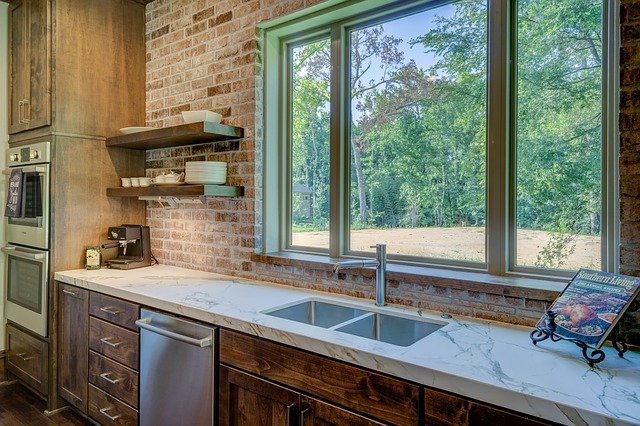If you are going to install a kitchen, you might wonder how many different things exist in the world of kitchen sinks. You might also wonder how to install a kitchen sink. First, let me start with the following sentence: The goal of any plumbing project is to connect all fixtures in an assembly so that they work properly and water drains freely without obstruction.
Kitchen faucets are, without a doubt, the hardest thing to install. I’m not saying that it is easy to do, but there more than one way in which you can accomplish it, and it really all depends on the type of sink you are installing. What most guests don’t realize about their faucets is that they have been fighting with an inferior plastic or brass faucet for years. It’s time to upgrade because your life will never be the same again after you install a kitchen sink.
Table of Contents
Equipment
Installing a kitchen sink is not a job to take lightly. It’s not difficult, but it does require some plumbing knowledge and the right tools for the job. Anyone with basic DIY skills can install a new sink, but if you’re not confident in your abilities, you may want to consider hiring a plumber.
The process is similar for most sinks, whether they are drop-in, undermount or farmhouse style. The biggest difference is how you secure the sink in place.
- A new sink
- Supply lines
- Plumber’s putty (if needed)
- Silicone caulk
Shut off the water supply to the sink
Turn off the water supply and remove any existing pipes or fittings. Disconnect the pipes by loosening the hex nuts on each side of the joint with adjustable pliers. If you want to save a few dollars, carefully remove and save any P-traps and fittings that are still in good condition.
Pry up the old sink from under the countertop, then scrape away any remaining putty from around the drain hole. Clean away any remaining debris, dust, or bits of old putty from inside the countertop holes with a sponge and a putty knife.
Check the parts and ensure everything is working
Before you begin, check that you have all the parts you need and that they’re in good condition. If anything is damaged, return it to the store where you bought it.To make life easier on yourself, it’s best to assemble all your supplies before you start.
Cut the hole in the counter top
Before cutting the hole in the countertop, set it in place to make sure it will fit. Also check under the sink to make sure you have the proper clearance for the faucet. Then measure for the holes. For a three-hole sink with a strainer, there should be 7 inches between center lines of the drain and handle holes, and 5 inches between the handle and edge of counter.
Remove old sink
After removing the old sink, it is important to thoroughly clean out any debris or dirt from underneath the countertop. The new sink should then be placed into position and carefully leveled using a tape measure or leveler device. Underneath the countertop, small wooden blocks can be used to hold up any areas that are not level with others.
Attach faucet, trap and drain lines
Attach the trap to the drain stub-out under the sink using ABS cement (read the label for instructions). Then attach a length of ABS pipe from the trap to the tailpiece of your sink drain. Use ABS cement for all connections dry fit everything first, then remove pieces and apply cement before putting them back together again.
Connect sink to disposal, dishwasher and water supply
Connect all the drain pipes together before you set the sink into place; then measure from the back of the cabinet to the tailpiece (the pipe coming down from your new sink). Mark this measurement on your countertop and cut it 1/4 inch shorter than the measurement. This will allow room for your bead of caulk to hold the sink in place.
A typical installation has three supply lines hot and cold water, and a third for the dishwasher. The garbage disposal will have an electrical outlet nearby with a switch on the wall. You’ll also need to install an air gap if your dishwasher drains into the garbage disposal.
Seal gaps around the sink with caulk or silicone
Most kitchen and bathroom sinks have three holes two for faucets and one for a sprayer or soap dispenser. The number of holes in the countertop will determine which type of faucet you can use.
The number of holes in the sink itself may not be the same as those in the countertop — many sinks come with additional holes drilled in them that can be covered by special plugs if not needed. Check with your sink manufacturer before buying a new faucet to make sure it will fit your sink.
Conclusion
If you’re the kind of person who likes to know how things work, then you’ll be delighted with the simple explanation of how your new faucet is installed. If you like to read step-by-step guides and instructions, you’ll also be pleased with this guide. It’s tidy, easy to understand, and straightforward. Plus, it makes one thing very clear: as long as you have strong hands and can follow directions, installing a kitchen sink isn’t difficult at all.
The installation process is fairly simple, and we had no problems with our sink. I hope we have been able to help you with any concerns that may be holding you back from installing a sink in your kitchen. For more pictures of our finished product, please follow the link below.
Kitchen sinks are quite hard to install, as they usually weigh more than 50 pounds. If one person is installing the sink, it is best if they have someone else help them hold the sink while they fasten it.


